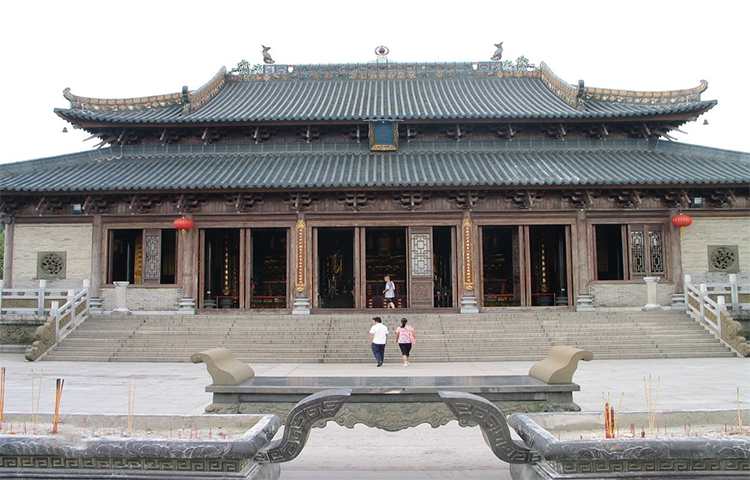Explore Bao Feng Temple: Mazu Daoyi and Jiangxi’s Millennial Zen Legacy
Bao Feng Temple: Millennial Zen Origins in Jiangxi
Introduction: A Thousand-Year Zen Sanctuary
Tucked into the emerald mountains of Jing’an County in Jiangxi Province lies Bao Feng Temple, an ancient monastery more than a thousand years old. As one of the founding sites of the Linji school of Zen and the birthplace of China’s monastic “cong-lin” system, Bao Feng offers visitors a rare chance to step into living Buddhist history. Ancient trees, distant bell tolls and the legacy of Tang-dynasty master Mazu Daoyi create a contemplative atmosphere ideal for cultural exploration and spiritual reflection.
1. Core features and spiritual essence
“Mazu founded the cong-lin; Baizhang set the rules” — a living relic of Zen reform
The soul of Bao Feng Temple lies in its historical role as the incubator of the cong-lin (communal monastery) system. In the Tang era, Master Mazu Daoyi established practices here that shaped monastic life; his disciple Baizhang Huaihai later formalized those practices into the Baizhang Qinggui (Baizhang’s Regulations), a code that influenced Buddhist monastic governance for a millennium.
Key selling points:
– One of the ancestral monasteries of the Linji school of Zen, with high historical status.
– Home to one of Jiangxi’s oldest stone pagodas — the Mazu Relic Pagoda, dating to the Tang dynasty.
– The ruined site of the original “selection courtyard” (xuanfo chang) rebuilt in the Qing era, a tangible witness to the cong-lin system.
2. History and cultural significance
A millennial temple shaped by dynasties
Bao Feng Temple was founded in the Tianbao years (742–756) of the Tang dynasty, giving it more than 1,200 years of history. As a major base for Mazu Daoyi’s teaching, the temple was repaired and expanded through the Song, Yuan, Ming, and Qing dynasties. Most surviving structures reflect Qing architectural style. In 2001 the temple was listed as a protected cultural relic of Jiangxi Province.
Zen ancestry with far-reaching effects
Mazu Daoyi’s emphasis on “ordinary mind is the Way” helped Sinicize Zen Buddhism. Baizhang’s Qinggui, developed here, became a standard for monastery management across China, earning Bao Feng Temple the reputation as the birthplace of the nation’s monastic rules.

3. Architecture and art highlights
A Qing-era monastery embraced by the mountain
The temple follows the traditional Chan (Zen) central axis layout and sits into the slope of the mountain. Key structures include:
1. Mountain Gate (Shanmen) — simple and solemn, flanked by ancient trees.
2. Hall of Heavenly Kings (Tianwang Hall) — houses the Four Heavenly Kings who protect the Dharma.
3. Mahavira Hall (Daxiong Baodian) — a single-eave xieshan roof structure enshrining Shakyamuni Buddha; the interior is austere and reverent.
4. Dharma Hall (Fatang) — the space where monks preach and teach.
Key structures include:
Mazu Relic Pagoda: a Tang dynasty stone marvel
The temple’s most treasured artifact is the Mazu Relic Pagoda, a seven-story, eight-sided stone tower standing about 4.5 meters tall. Finely carved and exceptionally well preserved, it is among Jiangxi’s oldest surviving stone pagodas and directly ties Bao Feng Temple to Mazu Daoyi’s legacy.
Stele inscriptions and stone carvings
Bao Feng also preserves Tang-era stone inscriptions and later Ming and Qing steles that chronicle the temple’s history and the development of Chan Buddhism in the region.
4. Religious life and immersive experiences
Morning bells and evening drums — living monastic routines
– Daily practice: Monks chant morning and evening sutras; visitors are welcome to observe quietly.
– Major ceremonies: Large-scale dharma assemblies are held each Lunar New Year month and in the seventh lunar month, when pilgrims and devotees gather for solemn observances.
How to participate
– Incense and prayer: Visitors may offer incense following Buddhist etiquette.
– Lamp offerings and donations: You can make merit offerings to support temple upkeep.

5. Environment and atmosphere
Ancient woods and a Zen landscape
Bao Feng is surrounded by verdant forest and mountain streams, creating a perfectly tranquil “Zen landscape.” The setting reinforces the meditative quality of the temple and invites slow, contemplative walks.
Crowd profile and vibe
– Devout worshippers: More numerous during festival assemblies.
– Cultural visitors: Typically come to study Zen history and architecture.
– Atmosphere: Quiet, respectful and suitable for meditation and reflection.
6. Suggested itinerary
Recommended visit length: 2–3 hours
– Ideal for cultural exploration, short Zen practice, and photography of historic architecture.
– Combine with Sanzhaolun National Forest Park in Jing’an for a full-day mountain-and-temple itinerary.
7. Practical tips
Visiting etiquette
– Dress modestly: Avoid short skirts and shorts out of respect.
– Behavior: Keep voices low and do not touch statues or sacred objects.
– Photography: Non-commercial photography is allowed; avoid flash.
Opening hours and tickets
– Hours: 08:00–17:00 year-round.
– Admission: Free (some ceremonies may require prior registration).
Getting there
– By car: Navigate to “Jing’an Bao Feng Temple” — parking is available on site.
– By bus: Catch a local shuttle from Jing’an county center to Baofeng Town, then walk about 10 minutes.
8. Local insights
Best times to visit
– Early morning (07:00–09:00): Few people, clear bell echoes, most meditative.
– Autumn: The temple against red autumn foliage is particularly picturesque.
Pitfalls to avoid
– Beware of unofficial fortune-tellers or aggressive sellers pushing expensive “merit” services.
– Respect the monastic community and avoid disturbing monks during practice.
Conclusion: A millennial conversation for the heart
Bao Feng Temple is more than an ancient building — it is a living chapter of Zen history. Here you can touch the teachings of Mazu Daoyi, witness the birthplace of Baizhang’s monastic code, and find a quiet place for reflection. If you seek cultural depth and inner calm, Bao Feng Temple in Jing’an is well worth the journey.
“Between Zen and mountain water, a temple spans a thousand years.” Are you ready to begin your Zen pilgrimage?


